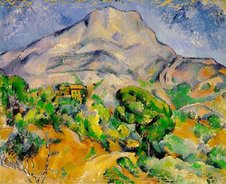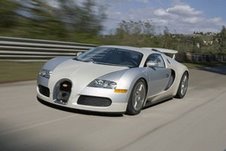Thursday, June 28, 2007
The wanderlust returns
Thursday, June 21, 2007
Beware Sancerre wine bottled "sans care"

Updated Saturday 24 June (please scroll to end)
Updated Saturday 23 June (please scroll to end)
Up until two days ago, I had always regarded Sancerre a safe wine for entertaining. Everyone knows the name, and this occasional tippler considers the rosé to be well balanced (usually) between sweetness and acidity, without the harsh resinous edge one associates with a lot of much cheaper offerings.
We've had a Sancerre rosé sitting in the rack since last November (about which more later) and decided on Tuesday that we would have it between ourselves.
I'm glad we made that decision, rather than offer it to guests. It was dreadful. After a glass each we gave up in disgust. Thirty minutes later, we both had a metallic burning taste on the palate. It stayed for several hours: had we been entertaining guests, it would have ruined the evening.
One sniff at the neck of the bottle confirmed my suspicions - sulphur dioxide ! The wine had been heavily overtreated with sodium metabisulphite.
(For the chemically uninitiated, metabisulphite comes as a crystalline white solid. It slowly releases its sulphur dioxide in contact with water: anyone who has made their own wine will be familiar with it as Campden tablets).
So where did we get our duff Sancerre, you may be wondering. At some dodgy back street supplier, or from the pile-em-high, sell-'em cheap basket at the supermarket ?
Far from it. It was a trophy we brought back from the Salon du Palais Gourmand at the Cagnes race course, the subject of an earlier post.
But no, the lady would not hear of that, and produced an unopened bottle of 2004 Sancerre for about €15 as I recall.
So how come it had so much sulphur dioxide, and was there any way we could have known ?

Well, this retired biochemist/food scientist is no innocent abroad when it comes to food additives. Yes, I had noticed the warning in small print on the side of the bottle "contains sulphites". You can see it (just) in the pictutre above, written vertically on the right of the label.
For a man of average weight this is less than a third of a bottle of a white wine with a concentration of 200 mg per litre.
Regular consumption of conventional wines means regularly exceeding the RDA of sulphur dioxide by a large margin.
More specifically, sulphur dioxide can cause allergic reactions in some people. It is dangerous for asthmatics even at very low levels.
It's an article written by one Jamie Goode PhD, who has his own site ( which I yet to visit!)
http://www.wineanorak.com/
What caught my eye was the following statement:
Colin Berry 24 Jun 2007 14:12
A French wine-producing chateau, or its equivalents elsewhere, may produce the finest wine of its type in the world. But all that is irrelevant if the wine is sent out with an overdose of chemical preservative.
Posted by
sciencebod
at
4:51 pm
![]() 7
comments
7
comments
Labels: Cagnes Salon du Palais Gourmand, rosé wine, Sancerre wine, sulfites, sulfur dioxide, sulphites, sulphur dioxide
Monday, June 18, 2007
Goodbye President Blair
It's been a while since I last posted to the Telegraph's original blogs, now called "Staff Blogs". That's because of a huge diversion called My Telegraph from which I decided to withdraw some two weeks ago (see previous post). I've since begun to recognise myself again in the shaving mirror.
Daniel Hannan MEP, who blogs under the Telegraph's "Politics" category has always impressed me, as someone with that rare combination of an analytical mind who can also write in a light upbeat style.
His most recent blog was entitled "Labour's Constitutional Contortionists", to which I sent the following comment, which finally appeared after a 6 hour hiatus under my wife's "My Tel " log-in (don't ask, it would take too long to explain).
http://blogs.telegraph.co.uk/politics/danielhannan/june07/laboursconstitutioncontortionists.htm
As it happens, I read off my draft to her, before submitting, as is my wont, so when I announced that it had gone up under her name she was unfazed, saying it represented her own viewpoint entirely. Which is just as well, since the techies at the Telegraph would have got a smoking email by now if she had been asssociated with views that were not her own .....
Title: Playing with fire
Once the immediate threat of being Blair-bounced into the Mark 2 constitution, sorry, Treaty, has passed, the next item on the agenda ought to be that notorious unwritten UK Constitution.
I refer to the one that allowed the Granita deal to land us with a French style cohabitation, between right-wing President Blair, largely responsible for foreign affairs, and leftish "Premier" Brown, largely in charge of home affairs.It gave the President, aka de facto Head of State, the power to sign us up for the toppling of Saddam Hussein, with ne'er a thought to the aftermath.
It allowed the President to swan off to Singapore to sign us up for the 2012 Olympics - a menu without prices, whose current £9 billion estimated cost represents some three quarters of a million pounds for each of the 11,000 or so competing athletes.
It now allows the President to pitchfork us into a revived EU Constitution which he knows full well would be thrown out if put to a referendum in the UK, not because we are anti-Europe per se, but because we see it for what it is - yet another power grab by anti-democratic apparachniks in Brussels.
How come President Blair, with 10 years experience as de facto Head of State, cannot see that he is playing with fire?
It's not just his legacy he stands to lose in the next few days. It's the entire plot. He won't be able to show his face in the street if he tries stitching up the entire UK in his feverish eleventh-hour dealings with Merckel and Sarkozy.
Far be it from me to divine what the real UK Head of State is saying to him right now in those Wednesday meetings at the Palace. I just hope Her Majesty is not being tight-lipped.
How oddly appropriate that it takes the EU Constitution to bring home the glaring inadequacies of our own. We scrutinise, quite rightly, every word in the new draft. Yet for the last 10 years, our unwritten Constitution has been the plaything of a silver-tongued chancer, still in thrall to his own reflection.
Posted by
sciencebod
at
6:20 pm
![]() 0
comments
0
comments
Labels: "President" Blair, 2012 Olympics, EU Constitution, EU treaty
Friday, June 15, 2007
Quick look at Aix-en-Provence

Heart of old Aix (Place Hôtel de Ville)
We made a day trip last year to Avignon by train – a wedding anniversary present from the children - and had been greatly impressed by that veritable time-warp of a destination. There were just two niggles . First, they still haven’t got round to repairing that Pont d’Avignon. Surely the nation that built the Millau Bridge can cope with a footbridge over the Rhone. (Just joking, of course: the Rhone in spate would probably deal with any new bridge the same way it’s dealt with all its predecessors. )
The other complaint is its size. Avignon, or at any rate the historic heart thereof, is not that big, and the square next to the Papal Palace is a magnet for every single tourist around lunchtime.
It’s just one stop on the TGV to the neighbouring Aix-en-Provence. Not having had time to see it on the Avignon trip, I assumed it would be quite some time before we felt ready to face another lengthy day excursion. But as mentioned in the previous post, we used Marseille airport to get to Madrid, so hit on the idea of bed-and-breakfasting in Aix on the return journey.
Nothing could be simpler from a logistic standpoint. You come out of the airport terminal, and there’s a regular express bus service into Aix. First stop, in fact, is Aix’s TGV station, way out in the wilds as TGV stations tend to be, so it was handy to get a glimpse of where we would be boarding our train back to Antibes the next day.
As soon as one sees Aix’s first edge-of-town filling station, one is almost at the putting -down place for buses, and it’s then just a 10 minute walk, if that, up to the Place General de Gaulle, Aix’s busy main square, with its vast Rotunda fountain, topped by what seems like the Three Graces. Our hotel for the night, Le Christophe, which we can recommend for olde-worlde French décor and atmosphere, is right on the square.
After unpacking, we plonked down with a degree of trepidation at a nearby restaurant. It was 10pm, and there were other diners tucking into their desserts. We need not have feared; in fact folk were still arriving some 30 or 45 minutes later. Such a change from Antibes, where curiously, despite its year round flood of visitors, things tend to close up early, too early one feels. Typical Aix thoroughfare (from Petit Train)
Typical Aix thoroughfare (from Petit Train)
The next morning we made enquiries and were relieved to hear that Aix had that essential facility for the flying visitor, namely Le Petit Train.
In fact, to its credit, it did not look like a train at all, as befits a mellow town that attracts couples rather than families with younger children. It took the best part of an hour to do the main sights, and Aix impressed with its sheer size and seamless authenticity: there seemed to be one busy thoroughfare, or square after another, usually boasting some noteworthy relic from the past. We were also taken out of town up a hill, near the top of which is Cezanne’s house, which is open to the public (though we didn’t stop). The guide explained that the great man had chosen that spot deliberately, being fixated by the sight of Mont St. Victoire, which appears in scores of his paintings.

I was greatly impressed by the two huge sculptures of the bearded gents, supporting a balcony over a doorway.
I've since learned (more retrospective reading of the guide book) it is (was?) the Hôtel Maurel de Pontevès, built in 1647. It is in an excellent state of preservation ( a tribute, one assumes to clean air, being some distance from the Marseilles refineries.

And finally, to round off six nights away from home, we chose a long-established restaurant on the Cours Mirabeau for our last main meal. It's called Les Deux Garçons, and apparently world-famous, established, it says in 1792. The date's on the plate as well, just in case it slips your mind- assuming that number's not the calorie count.
 I ordered the salade gourmande. Although not the greatest fan of paté foie gras, that pale slice sitting on top was something else - butter-like in its creamy smoothness. Note also the cured duck.
I ordered the salade gourmande. Although not the greatest fan of paté foie gras, that pale slice sitting on top was something else - butter-like in its creamy smoothness. Note also the cured duck.Thursday, June 14, 2007
Visit to Madrid
 Retiro Park with Alfonso XII mausoleum in background
Retiro Park with Alfonso XII mausoleum in background
Madrid is one of those places I had always intended to visit one day, but I kept putting it off. There always seemed to be other, more enticing places that had to be seen first.
Last week we did finally get round to checking it out, taking the TGV to Marseilles, and then a Ryanair flight to the Spanish capital. Having spent 5 nights there, I would concur wholeheartedly with an article in the Sunday Telegraph travel section that appeared while we were there: Barcelona had better watch out. Madrid has quietly been getting its act together. It offers as good, if not better an intoxicating mix of things to do, places to visit as its Catalan rival. Indeed, I had a greater, more immediate sense of "being there" in Madrid than in Barcelona
which we visited some four years ago.
The first thing that hits you is the colour and variety of the architecture, and the way that modern additions blend easily with the old – enhancing rather than detracting. Then there is the sheer abundance of bars, cafes , shops and restaurants. But it's the people that create an impression too: there are fewer foreign tourists than Barcelona, most of the voices one hears are Spanish, and indeed the amount of English spoken is minimal – even in hotels and restaurants. So the overwhelming sensation is one of cultural and linguistic harmony.
There's something else about Madrid that appeals, especially after a recent visit to London. It's the near seamless spread of prosperity one sees, not just in the centre, but extending way out into the suburban residential areas. But it's not look-at-me yuppified prosperity: I think I saw just two Porsches in Madrid. In parts of London, every other car now seems to be a Porsche, Aston Martin or Ferrari, making one feel the poor relation. And Metro tickets are priced for ordinary folk, in contrast to Mayor Livingstone's cynical policy of ripping off locals and visitors alike.
I didn't take many pictures in Madrid. It's one of those places where there are few things that are hugely photogenic – at least in a small camera viewfinder – so that any attempts to photograph fail to do justice to the enveloping Surroundoscope feel of the place.
One notable exception was the Retiro park – a vast rectangle of green on the eastern side. The many-pillared monument to a past king, Alfonso XII, up there on his high horse, is striking in a purely monumental sense, if you care for that sort of thing. But again, the camera fails to do justice, given that the feature forms a backdrop to a huge boating lake. Another consideration is that the entire eye-catching ensemble can be viewed at leisure through a slight alcoholic haze, if one is so inclined, by sitting oneself down at the open-air cafeteria , with its comfortable seats, sunshades and tasty nibbles – even if the crab in the salad was fake.
 Ornamental gardens in Retiro Park, looking west
Ornamental gardens in Retiro Park, looking westThursday, June 07, 2007
See you soon
Just a quick update, since there's packing to do. We're off to Madrid for a few days. It's somewhere I've always wanted to visit.
I decided yesterday to retire from My Tel. It's a bit of a vortex, sucking you in, taking over your life. Some of the threads get tedious and fractious, and it's especially galling to make what one thinks is a telling point and have the agenda-pushers carry on regardless. Oh yes, agenda pushers - they could be the subject of several posts in the way they operate, arriving on the scene like gentle little mice which then mutate into bug-eyed monsters.
Sorry if I'm getting carried away. My Tel is brilliant in principle, but deeply flawed and dysfunctional in the way it operates. There are threads at the moment with some navel-gazing on the subject, and one or two good ideas, but all it takes is for someone to cry "no censorship here" and everyone scurries for cover.
When I get back from Madrid, I'll give a brief report on main impressions, and then unveil a mischievous take on a certain type of individual one encounters a lot on holidays, but who lurks in workplaces and blogs as well. It's one I provisionally call "Caravan Man" (or Caravan Woman). They don't have a caravan, but seem to tow a lot of their parochial mindset with them wherever they ago. But the main problem is the way they appropriate and defend territory, indifferent to others with an equal claim. More about that later.
God, is that what a month of My Tel has done to me ?










